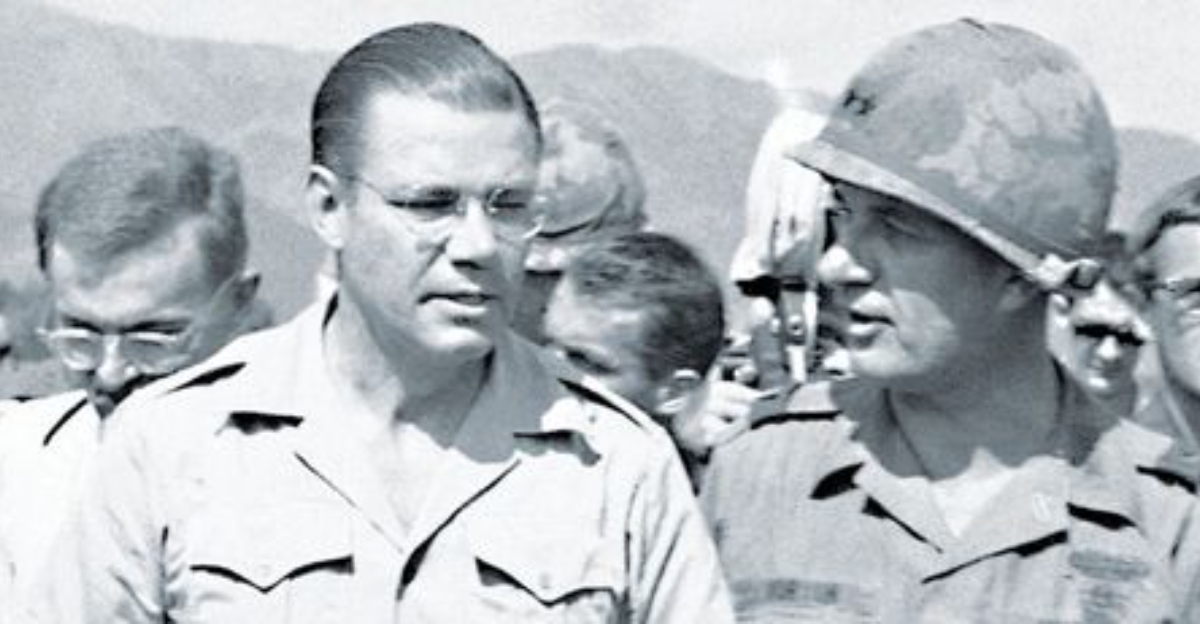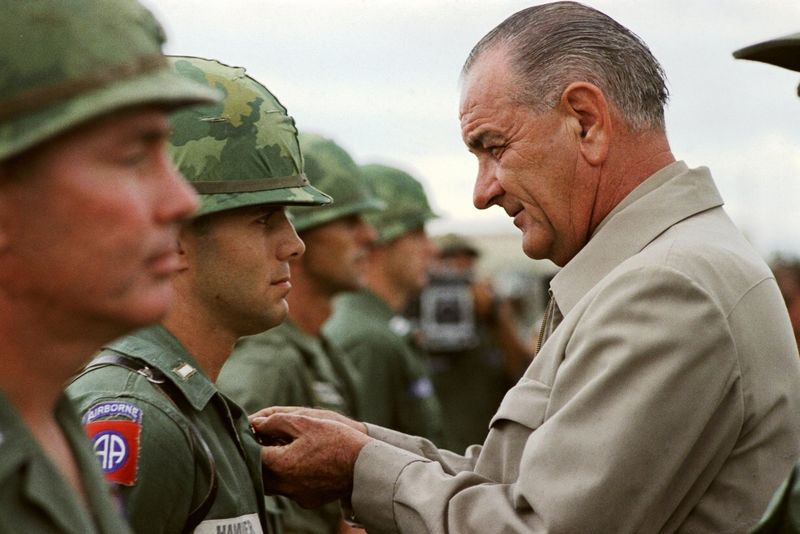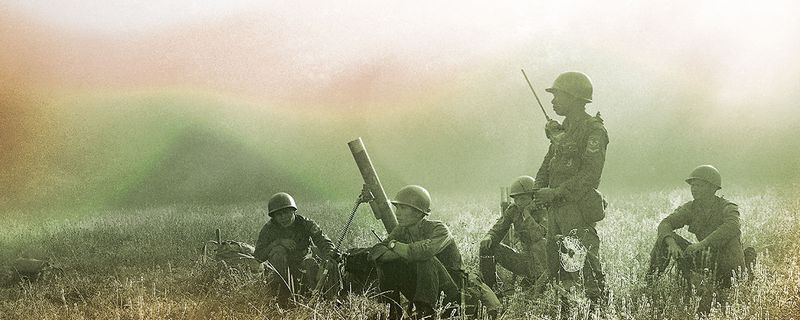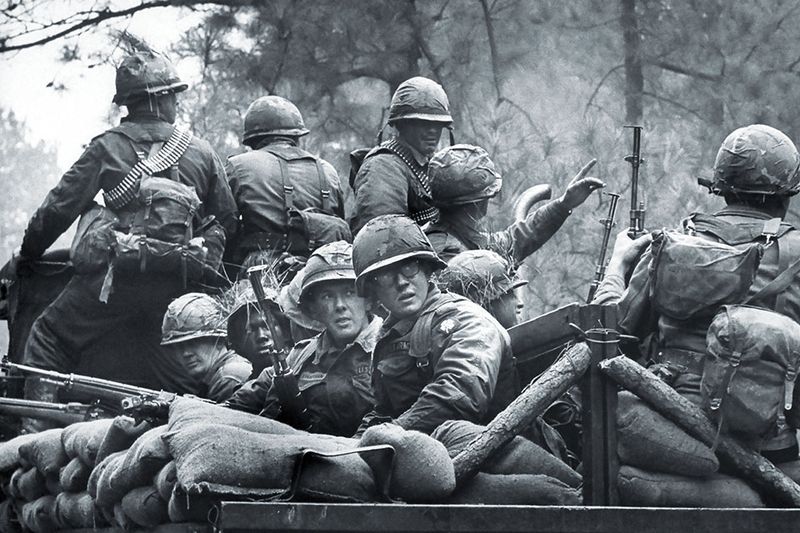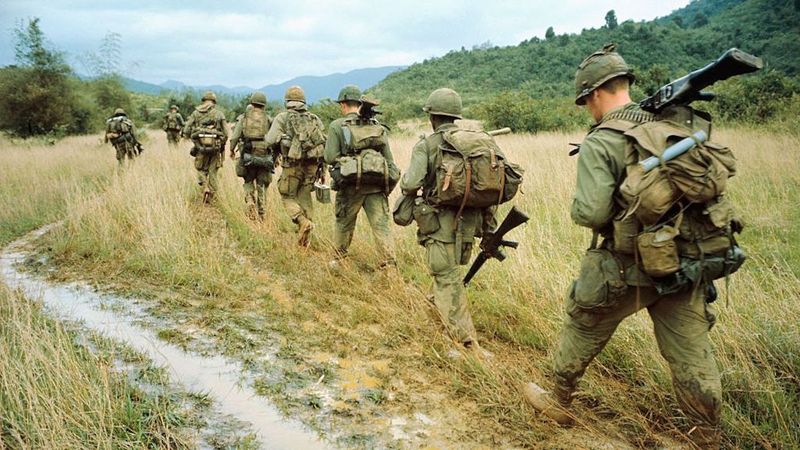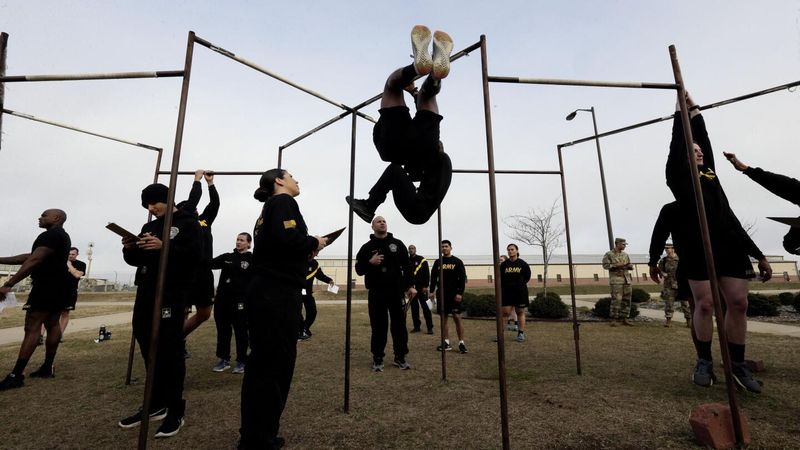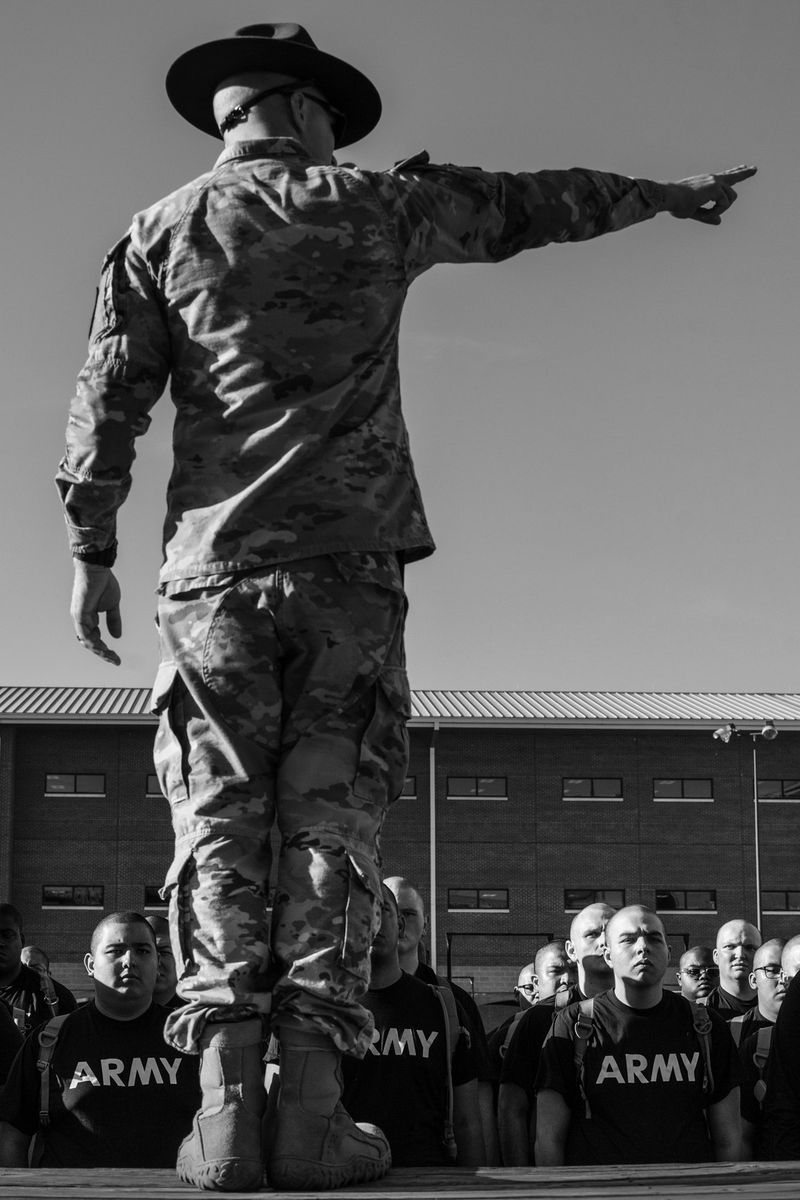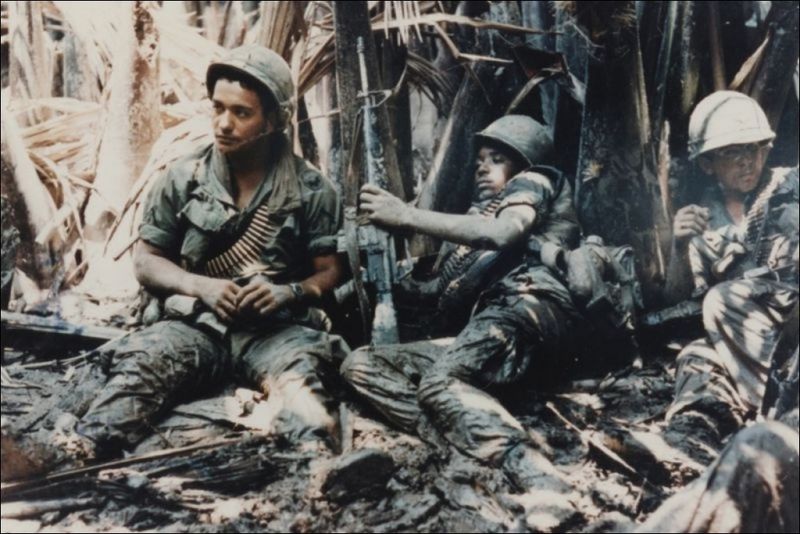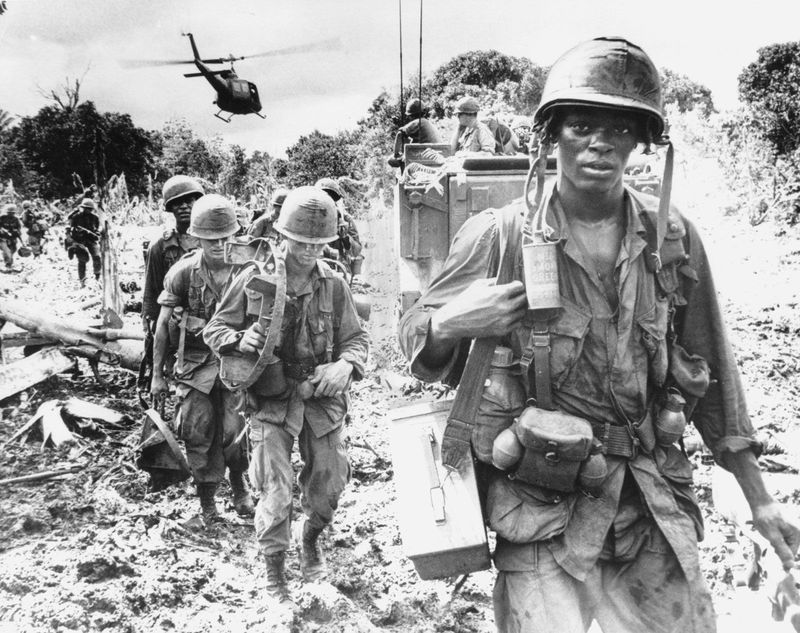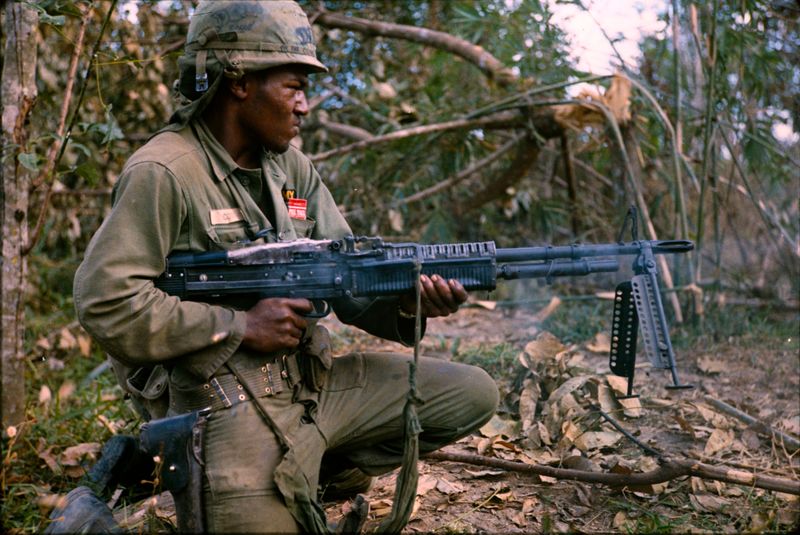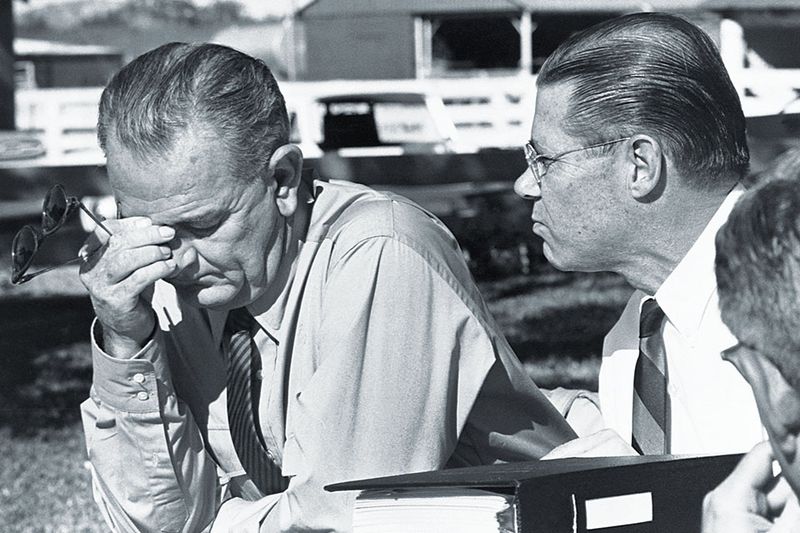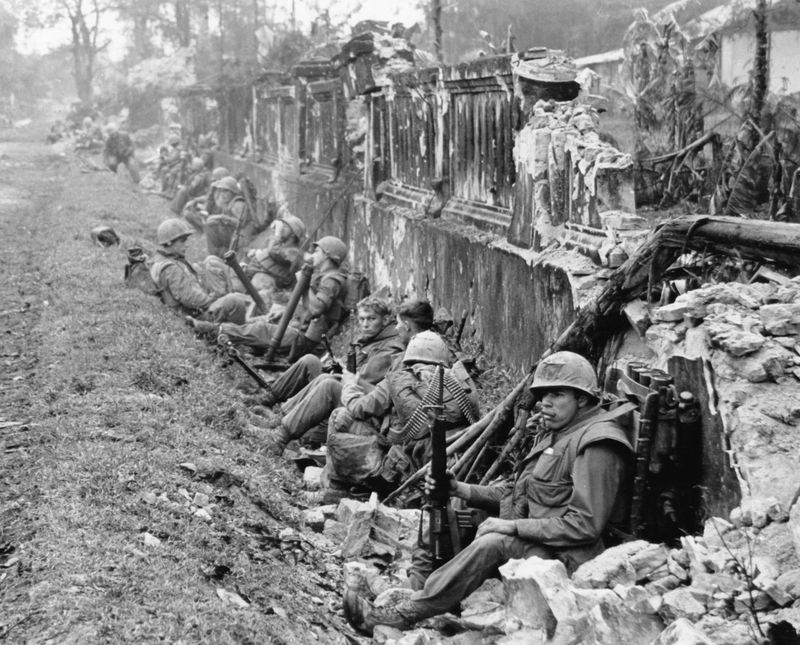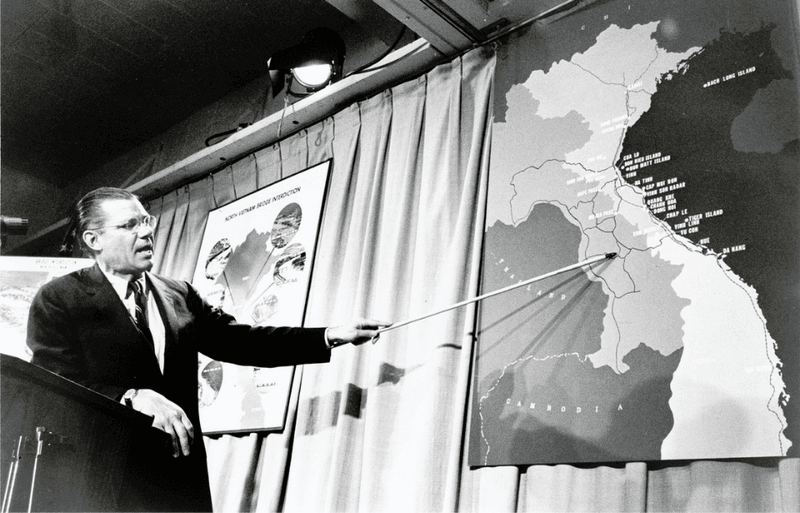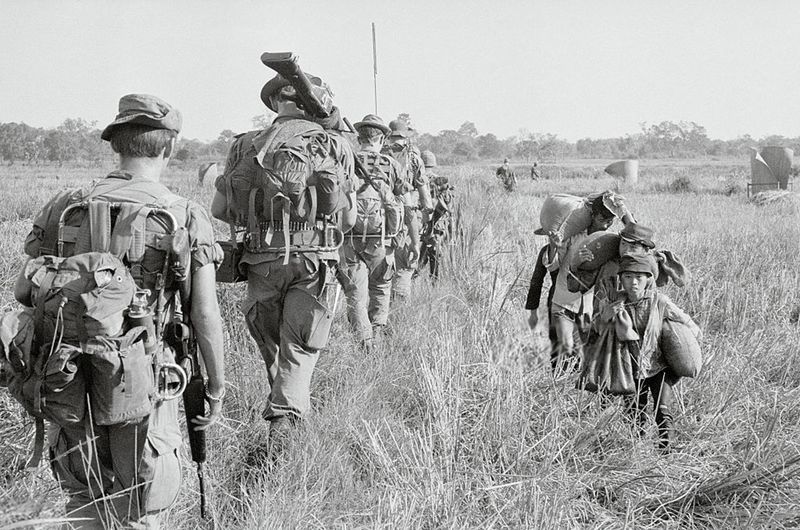Project 100,000 was launched in 1966 as part of President Lyndon B. Johnson’s “Great Society” programs. It aimed to recruit 100,000 men annually by lowering enlistment standards.
These men, often referred to as “McNamara’s Morons,” were sent to Vietnam with higher casualty rates and minimal benefits. Criticized for exploiting vulnerable populations, the program ended quietly in 1971.
1. Project 100,000 Originated Under President Lyndon B. Johnson
In 1966, President Lyndon B. Johnson introduced Project 100,000 as a part of his ambitious “Great Society” initiative. This program was designed to offer a fresh start to disadvantaged Americans by transforming them into serviceable military personnel. Johnson’s vision was to tackle poverty and inequality, but the execution raised ethical concerns.
While intended as a social uplift, many critics argue that it merely exploited these individuals for military needs. Despite its noble intentions, the reality turned grim as the program unfolded, highlighting a complex intertwining of politics and human lives.
2. Goal: Recruit 100,000 Men Annually
The ambitious target of Project 100,000 was to bring in 100,000 new recruits each year. These recruits were individuals who previously didn’t meet military standards, due to various reasons such as educational or cognitive shortcomings. By lowering the bar, the program aimed to increase military personnel rapidly.
This initiative, however, sparked concerns about whether the military was compromising its standards for quantity over quality. The program’s critics pointed to potential risks, including the recruits’ ability to handle the physical and mental challenges of military life.
3. The Men Were Dubbed “McNamara’s Morons”
The recruits of Project 100,000 were harshly nicknamed “McNamara’s Morons” after Secretary of Defense Robert McNamara. This derogatory term reflected public skepticism and disdain towards the program. Critics viewed the recruits as cannon fodder, sent to Vietnam with bare minimum preparation.
McNamara’s vision of social reform was overshadowed by the grim realities faced by these soldiers. Despite the offensive nickname, many of these men displayed resilience and bravery. Their stories highlight the human cost of political decisions and the stigmatization of those caught in the system.
4. Mental Standards Were Lowered
Project 100,000 recruited men who fell into Category IV on the Armed Forces Qualification Test, representing the 10th–30th percentile of cognitive ability. This adjustment allowed individuals to join the ranks who would otherwise be ineligible, focusing on giving them a second chance.
The relaxation of mental standards, however, came at a price. Many recruits faced significant challenges in adapting to military life, which requires quick thinking and adaptability. Lowering these standards sparked debate about the preparedness and safety of these soldiers, especially in combat zones like Vietnam.
5. Not Just Mental – Physical and Educational Standards Were Also Relaxed
Apart from cognitive criteria, Project 100,000 also relaxed physical and educational standards. This meant that individuals with minor health issues, criminal records, or poor literacy were admitted. The goal was to widen the net and provide opportunities for those neglected by traditional enlistment criteria.
While this inclusivity seemed positive, it resulted in a cohort of soldiers ill-prepared for the rigors of military service. Critics argue that the program prioritized numbers over the welfare of recruits, leaving many vulnerable to the harsh realities of war without proper preparation or support.
6. Over 350,000 Recruits Entered Through the Program
Between 1966 and 1971, over 354,000 men were enlisted under Project 100,000. This massive influx was seen as both a success in numerical terms and a point of contention over the methods used. These recruits joined various military branches, facing challenges that were often overwhelming.
The program’s sheer scale highlighted the urgent demand for military personnel during the Vietnam War. However, it also brought to light the ethical concerns and human costs associated with such large-scale recruitment of individuals who were often ill-equipped for military life.
7. Many Were Sent Straight Into Combat
Despite promises of technical and support roles, many recruits from Project 100,000 found themselves in direct combat situations. This deployment contradicted initial assurances, as the need for manpower in Vietnam grew more pressing.
The lack of adequate preparation and training left these soldiers vulnerable. The harsh realities of war took a toll, with higher casualty and injury rates among these recruits. Their stories are a testament to the gap between policy intentions and the grim realities on the ground, underscoring the human cost of political and military decisions.
8. Higher Casualty Rates
Studies indicate that soldiers enlisted through Project 100,000 experienced casualty rates significantly higher than their peers. Some reports suggest these rates were up to three times higher, underscoring the dangers faced by poorly prepared recruits.
The program’s failure to provide adequate training and support contributed to this grim statistic. The high casualty rates became a sobering indicator of the program’s shortcomings, reflecting the cost of prioritizing recruitment numbers over the safety and readiness of soldiers. These figures fuel debates about ethical recruitment practices and military responsibility.
9. Disproportionately Affected Minorities and the Poor
Project 100,000 disproportionately enlisted minorities, including Black and Latino men, and individuals from poor rural communities. This demographic skew raised ethical concerns about exploitation and inequality. Critics argued that the program targeted those with few alternatives, offering military service as a means of escape.
While framed as an opportunity for social mobility, many recruits found themselves in precarious situations, facing combat without sufficient support. The demographic impact of the program reflects broader societal issues, highlighting the intersection of race, poverty, and military policy during the Vietnam era.
10. Billed as a “Social Uplift” Program
Project 100,000 was marketed as a “social uplift” initiative, promising skills, education, and better future prospects for disadvantaged youth. The intent was to provide training and job opportunities, helping recruits transition into civilian life successfully.
However, the reality rarely matched the promise. Many recruits returned home with limited skills, facing difficulties in finding employment or reintegrating into society. The program’s promotional narrative clashed with the lived experiences of its participants, revealing a gap between political rhetoric and actual outcomes, which continues to spark discussions on military ethics.
11. Training Programs Were Inadequate
The training provided to Project 100,000 recruits was often insufficient for the challenges of military life. Many recruits struggled due to the lack of tailored educational support and inadequate preparation for the complexities of combat.
This inadequacy left soldiers vulnerable and exposed, both physically and mentally. The program’s failure to equip its recruits properly highlights the pitfalls of rapidly expanding military forces without investing in comprehensive training and support systems. This oversight had lasting effects on the soldiers’ effectiveness and well-being, fueling criticism of the program’s execution.
12. Many Faced Lifelong Struggles Post-Service
Veterans who participated in Project 100,000 often returned to civilian life facing significant challenges. Many struggled with post-traumatic stress disorder (PTSD), unemployment, and homelessness, lacking the support needed to reintegrate successfully.
The promise of skills and upward mobility fell short for most, leaving them in precarious situations. This outcome underscores the need for comprehensive veteran support systems, especially for those from disadvantaged backgrounds. The lifelong struggles of these veterans serve as a poignant reminder of the long-term impacts of military policy on individual lives.
13. The Program Ended Quietly in 1971
As criticism of Project 100,000 mounted and the Vietnam War began to wind down, the program was quietly terminated in 1971. This unceremonious end reflected a growing recognition of the program’s flaws and the shifting political landscape.
The quiet conclusion avoided drawing attention to its controversial legacy, which remains a subject of critique among historians and veterans. The program’s closure marked the end of an era of experimentation with military recruitment standards, leaving behind lessons on the complexities and consequences of such large-scale initiatives.
14. Heavily Criticized by Veterans and Historians
Project 100,000 has faced heavy criticism from both veterans and historians. Widely regarded as a failure, it is seen as a moral stain on U.S. military policies during the Vietnam era. Critics argue it exploited vulnerable populations and prioritized numbers over human lives.
The program is often cited as an example of how policy can go astray when focusing on political rather than humanitarian goals. Its legacy continues to spark debates on military recruitment ethics and the responsibilities owed to recruits, especially those from disadvantaged backgrounds.
15. Used as a Political Tool
Project 100,000 was not just a recruitment effort; it served as a political tool. Marketed as a humanitarian initiative, critics contend it was used to meet draft quotas during the Vietnam War amidst rising demands for soldiers.
The program’s dual nature highlights the complex interplay between military needs and political agendas. This use of policy as a means to an end, rather than a genuine effort for social good, remains a cautionary tale of how political motivations can overshadow ethical considerations in military practices.
16. Robert McNamara Defended the Program
Robert McNamara, the architect of Project 100,000, staunchly defended the initiative. In his memoirs and public interviews, he claimed the program was well-intentioned, aimed at providing opportunities to the underprivileged.
However, he acknowledged the program’s poor execution and the challenges it faced. McNamara’s defense highlights the gap between vision and reality, raising questions about leadership responsibility and accountability. His perspective offers insight into the complexities of policy implementation and the unforeseen consequences that can arise, even with the best of intentions.
17. Ignored Warnings from Military Psychologists
Before and during Project 100,000, military psychologists warned about the potential consequences of recruiting individuals with low cognitive abilities. They cautioned that such recruits might struggle with the demands of combat, leading to severe emotional and behavioral issues.
These warnings were largely ignored as the military prioritized recruitment numbers over psychological assessments. The oversight resulted in recruits facing significant challenges, both during their service and after returning home. This neglect of expert advice illustrates the risks of sidelining critical insights in decision-making processes, especially in high-stakes contexts like military recruitment.
18. Few Success Stories, Many Tragedies
While there were a handful of success stories within Project 100,000, the majority of participants faced hardships and tragedies. Those who benefited often did so by sheer luck or personal resilience, rather than systematic support.
The program’s overall narrative is dominated by tales of struggle, reflecting its shortcomings in delivering on promises of uplift and opportunity. These stories emphasize the need for holistic and supportive policies that genuinely address the needs of disadvantaged individuals, rather than treating them as mere numbers in broader political and military strategies.
19. Echoes of the Program Exist Today
Though Project 100,000 ended decades ago, its echoes can still be felt in modern military practices. Some argue that similar recruitment strategies appear during wartime surges, often targeting disadvantaged populations.
This persistent pattern raises questions about the ethical considerations of military recruitment and the responsibilities owed to those who serve. By examining past programs like Project 100,000, contemporary military policies can learn to balance recruitment needs with the welfare and dignity of individual recruits, ensuring history does not repeat its mistakes.
20. A Cautionary Tale of Military Ethics
Project 100,000 serves as a cautionary tale in military ethics, illustrating how policy, propaganda, and politics can dangerously intersect with war. As an example of how not to conduct military recruitment, it highlights the need for ethical considerations in shaping military strategies.
This historical case study is used to teach about the importance of aligning military practices with humanitarian values. The program’s legacy reminds policymakers and military leaders of the significance of ethical responsibility, ensuring that future initiatives prioritize the welfare and dignity of recruits above all else.
